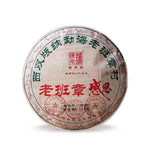Why Is My Iced Tea Cloudy
When you make iced tea, you may notice that it sometimes turns cloudy. This cloudiness is generally harmless and can be attributed to several factors. Primarily, cloudiness in iced tea is caused by the precipitation of tannins, which are naturally occurring compounds in tea.
Factors that influence cloudiness:
- Temperature: Rapid cooling of hot tea leads to cloudiness. When tea is hot, tannins are fully dissolved. As it cools, these tannins can no longer stay dissolved.
- Tea Quality: Lower quality teas often have more impurities that contribute to a cloudy appearance.
- Water Quality: Hard water, with high mineral content, can react with tannins to create cloudiness.
- Steeping Time: Oversteeping your tea can release more tannins, making the tea cloudier upon cooling.
- Refrigeration: Storing tea in the refrigerator can lead to cloudiness, especially if it goes in while still warm.
To minimize cloudiness, you can:
Bestsellers
- Cool your tea to room temperature before refrigerating.
- Use filtered water to reduce mineral-induced cloudiness.
- Steep tea for the recommended amount of time.
- Choose higher quality tea with fewer impurities.
Remember, the cloudiness is purely aesthetic and does not affect the taste or safety of your iced tea. If the appearance bothers you, these steps can help you achieve a clearer brew.
Causes of Cloudiness
Your iced tea's cloudiness can often be traced back to a few key factors. Understanding these will help you achieve a clearer brew.
Temperature Changes
The way you cool your tea can greatly impact its clarity. When tea is cooled quickly after brewing, it can become cloudy. This is because some of the compounds in the tea, which are soluble at high temperatures, become insoluble as the temperature drops rapidly. This process forms small particles that create a cloudy appearance. To minimize this effect, consider cooling your tea slowly at room temperature before refrigerating.
Tea Quality and Type
The quality of tea leaves and the type of tea you use are crucial in determining whether your iced tea will be cloudy. Cheaper teas often contain more dust and fannings—small particles which can contribute to cloudiness.
- High-quality full-leaf teas generally yield a clearer iced tea.
- Teas like Assam or Keemun may naturally appear cloudier due to higher levels of tannins.
Brewing Time and Method
How you brew your tea is just as important as the type of tea you choose.
- Oversteeping can lead to excessive release of tannins, making the tea bitter and increasing the likelihood of a cloudy appearance.
- Using the correct water temperature for your tea type is essential. For example, green teas should be brewed at a lower temperature than black teas.
By paying attention to these brewing details, you can help ensure your iced tea remains clear.
Prevention Methods

To prevent cloudy iced tea, focus on the brewing process and the quality of water you use.
Proper Brewing Techniques
Brew at the Correct Temperature: Black tea should be brewed with water at a rolling boil, around 212°F (100°C). Green and white teas require cooler water, approximately 170°F (76.7°C) to 185°F (85°C), to prevent cloudiness.
Steeping Time: Do not oversteep your tea. For black tea, 3-5 minutes is optimal; green tea should steep for 1-3 minutes, and white tea for 4-5 minutes.
Using Filtered Water
Water Quality: Use filtered water to reduce the impurities that may contribute to cloudiness.
Mineral Content: Hard water with high mineral content can make teas cloudy. Soft, filtered water can help maintain clarity.
Lao Ban Zhang
Addressing Existing Cloudiness

If your iced tea has turned cloudy, there are a few methods you can use to attempt to clear it up:
-
Gradual Cooling
- Avoid pouring hot tea directly over ice.
- Let your tea reach room temperature before refrigerating.
-
Distilled Water
- Use distilled water to reduce mineral content which can cause cloudiness.
-
Dilution Method
- Gently stir in some hot water to the cloudy tea.
- The ideal ratio is about 1 part hot water to 3 parts tea.
-
Filtering
- Pass your tea through a finer strainer or cheesecloth to remove particulate matter.
It's also important to consider the tea type, as some teas are more prone to cloudiness than others. For example, black teas often have higher levels of naturally occurring substances that contribute to cloudiness when cooled.
Here's a concise overview to help you remember these steps:
| Method | Action |
|---|---|
| Cooling | Cool tea gradually, then refrigerate. |
| Water Choice | Use distilled water for brewing. |
| Dilution | Add hot water (1:3 ratio hot water to tea). |
| Filtration | Strain tea through a fine mesh or cheesecloth. |
Remember, these steps are a guide but they may not completely eliminate cloudiness in all cases, especially if it's due to the tea's natural composition.
Health and Safety Considerations
When your iced tea becomes cloudy, it's understandable to question whether it's safe to drink. Here are the health and safety considerations to keep in mind:
Microbial Growth: If your tea clouds soon after brewing, it's unlikely to be due to microbial growth. However, if it becomes cloudy after being stored improperly or for an extended period, bacteria and mold could be the culprits.
- Store iced tea in the refrigerator at 40°F (4°C) or below.
- Consume within 8 hours to ensure freshness and safety.
Chemical Changes: Cloudiness often results from natural chemical reactions, such as the precipitation of tannins, which are harmless.
- Use distilled or filtered water to minimize the possibility of cloudiness caused by hard water.
- Brew tea at the recommended temperature and time to reduce tannin release.
Allergens and Contaminants: Be cautious of any added ingredients that could introduce allergens or contaminants.
- Check the ingredient list for any potential allergens.
- Ensure utensils and containers are clean to avoid cross-contamination.
In general, a cloudy appearance in iced tea, especially immediately after brewing, is typically a visual quality issue and not a health concern. However, be cautious and discard any tea that has been left out for too long, has an off-odor, or shows signs of mold. When in doubt, it's best to err on the side of caution and prepare a fresh batch.
Frequently Asked Questions

Here are the most common queries you may have about cloudy iced tea, alongside specific and factual answers to help you understand this phenomenon better.
What causes iced tea to become hazy after cooling?
When iced tea cools, the compounds that provide flavor and color, called polyphenols, can form associations with other elements in the tea. These associations increase in size, scattering light and leading to the cloudy appearance.
Can consuming unclear iced tea lead to health issues?
Cloudiness in iced tea is primarily aesthetic and does not indicate spoilage. It's generally safe to drink, but if the tea has been stored improperly or for an extended period, it's best to err on the side of caution and avoid consumption.
Are there any methods to prevent my iced tea from becoming cloudy?
To prevent cloudiness, cool your tea to room temperature before refrigerating and consider using filtered water during brewing, as it can influence the final clarity.
Will adding baking soda to iced tea help clear up any cloudiness?
A small pinch of baking soda can help clarify iced tea by neutralizing some of the tea's tannins, which are responsible for cloudiness. However, be cautious with the amount used to avoid altering the tea's flavor.
How does the quality of water affect the clarity of brewed iced tea?
Hard water can contribute to a cloudy appearance due to higher concentrations of minerals like calcium and magnesium. Using soft, filtered water can thus enhance the clarity of your iced tea.
What are the steps to resolve cloudiness in already prepared iced tea?
If you have already prepared iced tea that turned cloudy, try adding a bit of boiling water to it. This can sometimes dissolve the tannin complexes causing the cloudiness.
← Older post Newer post →











